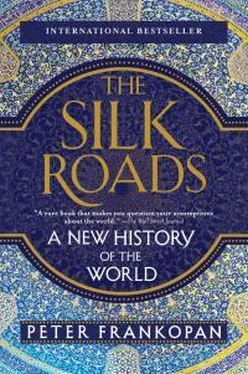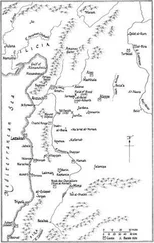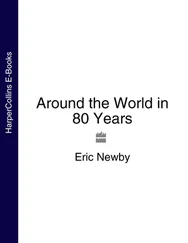30. “Iraq: The Dissembler,” Time , 13 April 1959.
31. “Middle East: Revolt in Baghdad,” Time , 21 July 1958; J. Romero, The Iraqi Revolution of 1958: A Revolutionary Quest for Unity and Security (Lanham, MD, 2011).
32. C. Andrew and V. Mitrokhin, The KGB and the World: The Mitrokhin Archive II (London, 2005), pp. 273–4; W. Shawcross, The Shah’s Last Ride (London, 1989), p. 85.
33. OIR Report, 16 January 1959, cited by Popp, “Arab Nationalism and US Cold War Policies,” p. 403.
34. Yaqub, Containing Arab Nationalism , p. 256.
35. W. Louis and R. Owen, A Revolutionary Year: The Middle East in 1958 (London, 2002).
36. F. Matar, Saddam Hussein: The Man, the Cause and his Future (London, 1981), pp. 32–44.
37. “Memorandum of Discussion at the 420th Meeting of the National Security Council,” 1 October 1959, FRUS, 1958–1960: Near East Region; Iraq; Iran; Arabian Peninsula , 12, p. 489, n. 6.
38. This incident was revealed during investigations in 1975 into the use of assassination as a political tool by U.S. intelligence agencies. The colonel, who is not named, was apparently executed by firing squad in Baghdad before the handkerchief plan was put into action, Alleged Assassination Plots Involving Foreign Leaders, Interim Report of the Select Committee to Study Governmental Operations with Respect to Intelligence Activities (Washington, DC, 1975), p. 181, n. 1.
39. H. Rositzke, The CIA’s Secret Operations: Espionage, Counterespionage and Covert Action (Boulder, CO, 1977), pp. 109–10.
40. A. Siddiqi, Challenge to Apollo: The Soviet Union and the Space Race, 1945–1974 (Washington, DC, 2000); B. Chertok, Rakety i lyudi: Fili Podlipki Tyuratam (Moscow, 1996).
41. A. Siddiqi, Sputnik and the Soviet Space Challenge (Gainesville, FL, 2003), pp. 135–8.
42. G. Laird, North American Air Defense: Past, Present and Future (Maxwell, AL, 1975); S. Zaloga, “Most Secret Weapon: The Origins of Soviet Strategic Cruise Missiles, 1945–1960,” Journal of Slavic Military Studies 6.2 (1993), 262–73.
43. D. Kux, The United States and Pakistan, 1947–2000: Disenchanted Allies (Washington, DC, 2001), p. 112; N. Polmar, Spyplane: The U-2 History Declassified (Osceola, WI, 2001), pp. 131–48.
44. Karachi to Washington DC, 31 October 1958, FRUS, 1958–60: South and Southeast Asia , 15, p. 682.
45. Memcon Eisenhower and Ayub, 8 December 1959, FRUS, 1958–60: South and Southeast Asia , 15, pp. 781–95.
46. R. Barrett, The Greater Middle East and the Cold War: US Foreign Policy under Eisenhower and Kennedy (London, 2007), pp. 167–8.
47. Department of State Bulletin, 21 July 1958.
48. Kux, United States and Pakistan , pp. 110–11.
49. V. Nemchenok, “In Search of Stability amid Chaos: US Policy toward Iran, 1961–63,” Cold War History 10.3 (2010), 345.
50. Central Intelligence Bulletin, 7 February 1961; A. Rubinstein, Soviet Foreign Policy toward Turkey, Iran and Afghanistan: The Dynamics of Influence (New York, 1982), pp. 67–8.
51. National Security Council Report, Statement of U.S. Policy to Iran, 6 July 1960, FRUS , 1958–1960: Near East Region; Iraq; Iran; Arabian Peninsula , 12, pp. 680–8.
52. M. Momen, “The Babi and the Baha’i Community of Iran: A Case of ‘Suspended Genocide’?,” Journal of Genocide Research 7.2 (2005), 221–42.
53. E. Abrahamian, Iran between Two Revolutions (Princeton, 1982), pp. 421–2.
54. J. Freivalds, “Farm Corporations in Iran: An Alternative to Traditional Agriculture,” Middle East Journal 26.2 (1972), 185–93; J. Carey and A. Carey, “Iranian Agriculture and its Development: 1952–1973,” International Journal of Middle East Studies 7.3 (1976), 359–82.
55. H. Ruhani, Nehzat-e Imam-e Khomeini , 2 vols (Teheran, 1979), 1, p. 25.
56. CIA Bulletin, 5 May 1961, cited by Nemchenok, “In Search of Stability,” 348.
57. Gahnamye panjah sal Shahanshahiye Pahlavi (Paris, 1964), 24 January 1963.
58. See D. Brumberg, Reinventing Khomeini: The Struggle for Reform in Iran (Chicago, 2001).
59. D. Zahedi, The Iranian Revolution: Then and Now (Boulder, CO, 2000), p. 156.
60. “United States Support for Nation-Building” (1968); U.S. Embassy Teheran to State Department, 4 May 1972, both cited by R. Popp, “An Application of Modernization Theory during the Cold War? The Case of Pahlavi Iran,” International History Review 30.1 (2008), 86–7.
61. Polk to Mayer, 23 April 1965, cited by Popp, “Pahlavi Iran,” 94.
62. Zahedi, Iranian Revolution , p. 155.
63. A. Danielsen, The Evolution of OPEC (New York, 1982); F. Parra, Oil Politics: A Modern History of Petroleum (London, 2004), pp. 89ff.
64. Above all see M. Oren, Six Days of War: June 1967 and the Making of the Modern Middle East (Oxford, 2002).
CHAPTER 23—THE ROAD OF SUPERPOWER RIVALRY
1. P. Pham, Ending “East of Suez”: The British Decision to Withdraw from Malaysia and Singapore, 1964–1968 (Oxford, 2010).
2. G. Stocking, Middle East Oil: A Study in Political and Economic Controversy (Nashville, TN, 1970), p. 282; H. Astarjian, The Struggle for Kirkuk: The Rise of Hussein, Oil and the Death of Tolerance in Iraq (London, 2007), p. 158.
3. “Moscow and the Persian Gulf,” Intelligence Memorandum, 12 May 1972, FRUS, 1969–1976: Documents on Iran and Iraq, 1969–72 , E-4, 307.
4. Izvestiya , 12 July 1969.
5. Buchan, Days of God , p. 129.
6. Kwarteng, Ghosts of Empire , pp. 72–3.
7. Department of State to Embassy in France, Davies-Lopinot talk on Iraq and Persian Gulf, 20 April 1972, FRUS, 1969–1976: Documents on Iran and Iraq, 1969–72 , E-4, 306.
8. G. Payton, “The Somali Coup of 1969: The Case for Soviet Complicity,” Journal of Modern African Studies 18.3 (1980), 493–508.
9. Popp, “Arab Nationalism and US Cold War Policies,” 408.
10. “Soviet aid and trade activities in the Indian Ocean Area,” CIA report, S-6064 (1974); V. Goshev, SSSR i strany Persidskogo zaliva (Moscow, 1988).
11. U.S. Arms Control and Disarmament Agency, World Military Expenditure and Arms Transfers, 1968–1977 (Washington, DC, 1979), p. 156; R. Menon, Soviet Power and the Third World (New Haven, 1986), p. 173; for Iraq, A. Fedchenko, Irak v bor’be za nezavisimost’ (Moscow, 1970).
12. S. Mehrotra, “The Political Economy of Indo-Soviet Relations,” in R. Cassen (ed.), Soviet Interests in the Third World (London, 1985), p. 224; L. Racioppi, Soviet Policy towards South Asia since 1970 (Cambridge, 1994), pp. 63–5.
13. L. Dupree, Afghanistan (Princeton, 1973), pp. 525–6.
14. “The Shah of Iran: An Interview with Mohammad Reza Pahlavi,” New Atlantic , 1 December 1973.
15. Ibid.
16. Boardman to Douglas-Home, August 1973, FCO 55/1116. Also O. Freedman, “Soviet Policy towards Ba’athist Iraq, 1968–1979,” in R. Donaldson (ed.), The Soviet Union in the Third World (Boulder, CO, 1981), pp. 161–91.
17. Saddam Hussein, On Oil Nationalisation (Baghdad, 1973), pp. 8, 10.
18. R. Bruce St. John, Libya: From Colony to Revolution (Oxford, 2012), pp. 138–9.
19. Gaddafi, “Address at Ţubruq,” 7 November 1969, in “The Libyan Revolution in the Words of its Leaders,” Middle East Journal 24.2 (1970), 209.
Читать дальше











